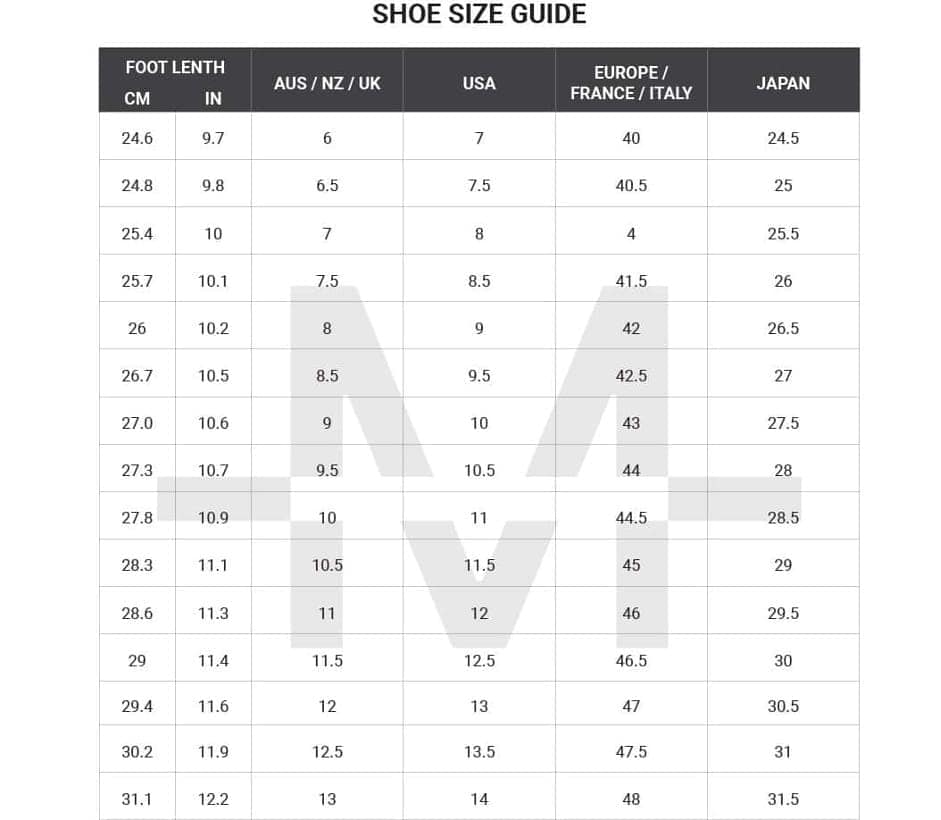Discover the Perfect Fit: Your Ultimate Guide to US-AUS Shoe Size Conversion for Kids
Hey there, awesome parents! Are you scratching your heads trying to find the perfect shoe size for your munchkins when shopping from overseas brands? Well, you’re in for a treat because you’ve just stumbled upon the most cheerful and useful guide to help you master the art of US to AUS shoe size conversion. Happy feet mean happy kids, and we’re here to ensure those little toes wiggle in comfort with the right-sized shoes!
Understanding Shoe Sizes: The Basics
First things first, let’s talk about getting those basics right. Did you know that shoe size systems differ across countries? That’s right, folks! The shoe size system in the United States is not the same as in Australia – and this can make online shoe shopping for your kids quite challenging. But worry not; we’re here to simplify the process.
A Glimpse at the US and AUS Shoe Size Differences
When you’re comparing US and Australian sizes, ideally, you wouldn’t find a huge disparity. The US sizing standard is pretty straightforward, with each full shoe size representing approximately one-third of an inch in length. However, in Australia, while the sizing method follows a similar pattern, there may be slight variations depending on the brand or manufacturer. It’s paramount to do a little homework before pressing that ‘buy now’ button.
Step-by-Step Conversion: US to AUS Shoe Sizes
Here’s where we make your life easier. The process of converting US shoe sizes to Australian sizes does not have to be as daunting as it seems. Follow these steps, and you’ll be sizing up those cute shoes in no time:
- Measure your child’s feet: This is a mission-critical step. Always get the most recent measurement of your child’s feet, as kids grow at the speed of light! You can measure the foot’s length from the heel to the tip of the longest toe.
- Find a reliable conversion chart: While we will provide a detailed conversion chart below, it’s beneficial to have access to a trustworthy source for conversion. The chart should factor in the specific nuances of kids’ US and AUS shoe sizes.
- Use conversion tools: There are plenty of online tools that automatically convert shoe sizes for you. Just input the US size, and voila, you have the Australian equivalent!
- Consult with brands: When in doubt, check the size guide provided by the specific brand you are purchasing from. Brands may have their personalised sizes, which can differ from generic charts.
- Consider width: Some little ones have wider or narrower feet, which can affect the size required. Keep this in mind when making your selection.
A Quick Peek at the US to AUS Kids’ Shoe Size Chart
Now, let’s look at a simplified version of the kids’ shoe size conversion chart from US to AUS:
Remember to refer to the comprehensive chart included further below for more detailed information and for conversions beyond the standard ranges.
Tips for Buying the Best-Fitting Shoes for Your Child
Let’s share a few secret nuggets of wisdom to ensure you bag the perfect pair every time:
- Account for growth: Kids’ feet grow so quickly, it’s always a smart move to buy shoes that allow some room for growth.
- Material matters: The right shoe material can make all the difference. Opt for breathable fabrics that afford flexibility for those active feet.
- Check for comfort: Comfort should always be the top priority. Ensure the insoles and padding support your child’s foot adequately.
- Easy on, easy off: We know how kids value independence, so look for shoes they can easily slip on and off themselves. Velcro and elastic laces are winners here.
- Read reviews: Other parents’ experiences can be gold. Read reviews to see if the shoes fit as expected or if you should size up or down.
Shopping for kids’ shoes, especially when juggling different country sizes, can sometimes feel like you’re trying to solve a puzzle while blindfolded. But with our handy guide by your side, you’re now equipped to turn that jumbled mess into a perfectly organized shoe rack of awesomely fitting shoes! Stay tuned for the next section, where we dive even deeper and give you the complete lowdown on shoe size conversion, complete with age-specific tips and tricks to keep those little feet trotting along happily!

5 Essential Things Parents Should Know for US to AUS Shoe Size Conversion
Before delving deeper into the world of shoe size conversion, let’s highlight the five critical things every parent should keep in mind while preparing for this often overlooked yet important task:
- Pay Attention to the Fit, Not Just the Size: It’s tempting to grab a pair of shoes based on size alone. However, the fit of the shoe is equally important as the size. Remember that some shoe designs may run narrow or wide, and depending on your child’s foot structure, you may need to adjust the size accordingly. Always look for a snug fit that doesn’t pinch or leave excessive room at the toes.
- Varying Brand Sizes: Brands can be tricky! Each brand may adhere to slightly different sizing. An Australian size 7 in one brand might not be the same as size 7 in another. It’s critical to check the specific brand’s size guide or get in touch with customer service for clarification to avoid unhappy returns.
- Stage of Development: Kids at different ages and stages of development have different footwear needs. For instance, toddlers require more room for growth and often a different style of shoe to those worn by older, more active children. Understanding these needs can influence the US to AUS size conversion and the type of shoes you opt for.
- Check In Regularly: Since kids’ feet can grow seemingly overnight, regular check-ins are essential. Measuring your child’s feet every few months is wise, so you’re always current with their sizing. This way, you’re less likely to be caught off-guard by a sudden growth spurt.
- Keep Future Needs in Mind: If you’re someone who likes to plan ahead or buy off-season deals, consider how much your child’s feet will grow before they actually wear the shoes. While it’s great to snag that bargain, buying too many sizes up could mean they’ll outgrow the shoe before they even have a chance to wear them.
Shoes play a significant role in supporting your child’s active lifestyle, so getting the right fit is paramount. The US to AUS shoe size conversion doesn’t have to be complicated – it’s all about being informed and prepared.
Diving Deeper: An In-Depth Look at US to AUS Shoe Size Conversion Across Age Groups
The next part of our guide will focus on different age categories, including toddlers, young children, and teens, and provide age-appropriate advice for each stage’s unique sizing needs. Whether you’re looking for the cutest little sneakers for your toddler’s first steps, sporty kicks for your primary schooler, or fashionable footwear for your teen, we’ve got you covered with precision and care.
By combining the power of a shoe size conversion chart with smart shopping tips and a bit of parental intuition, you’ll be more than ready to conquer any shoe-shopping quest. Our goal is to make sure that no matter where you’re shopping from, you’ll always feel confident in finding that ‘glass slipper’ fit for your ever-growing Cinderellas and Cinderfellas.
For more great articles please see here. For more information see here
Disclaimer
The articles available via our website provide general information only and we strongly urge readers to exercise caution and conduct their own thorough research and fact-checking. The information presented should not be taken as absolute truth, and, to the maximum extent permitted by law, we will not be held liable for any inaccuracies or errors in the content. It is essential for individuals to independently verify and validate the information before making any decisions or taking any actions based on the articles.




